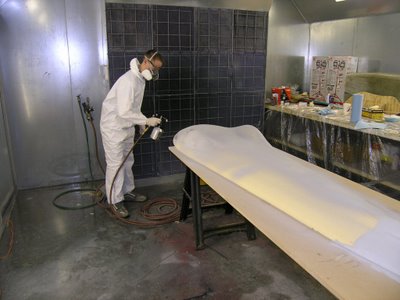 The foam pieces are glued together, screwd to MDF, and bondoed until there are no more visible holes and cracks.
The foam pieces are glued together, screwd to MDF, and bondoed until there are no more visible holes and cracks. The bottom part is being sprayed with duratec (a sandable primer) to give it a hard, smooth surface.
The bottom part is being sprayed with duratec (a sandable primer) to give it a hard, smooth surface. The top half (plug/tool) being sprayed with duratec by Estevan.
The top half (plug/tool) being sprayed with duratec by Estevan. After the duratec dries, the plug is then sanded to shape. The process of bondoing, spraying duratec, and sanding is repeated about 8 times per plug, until all holes, gaps, dips, and valleys are removed.
After the duratec dries, the plug is then sanded to shape. The process of bondoing, spraying duratec, and sanding is repeated about 8 times per plug, until all holes, gaps, dips, and valleys are removed.
















